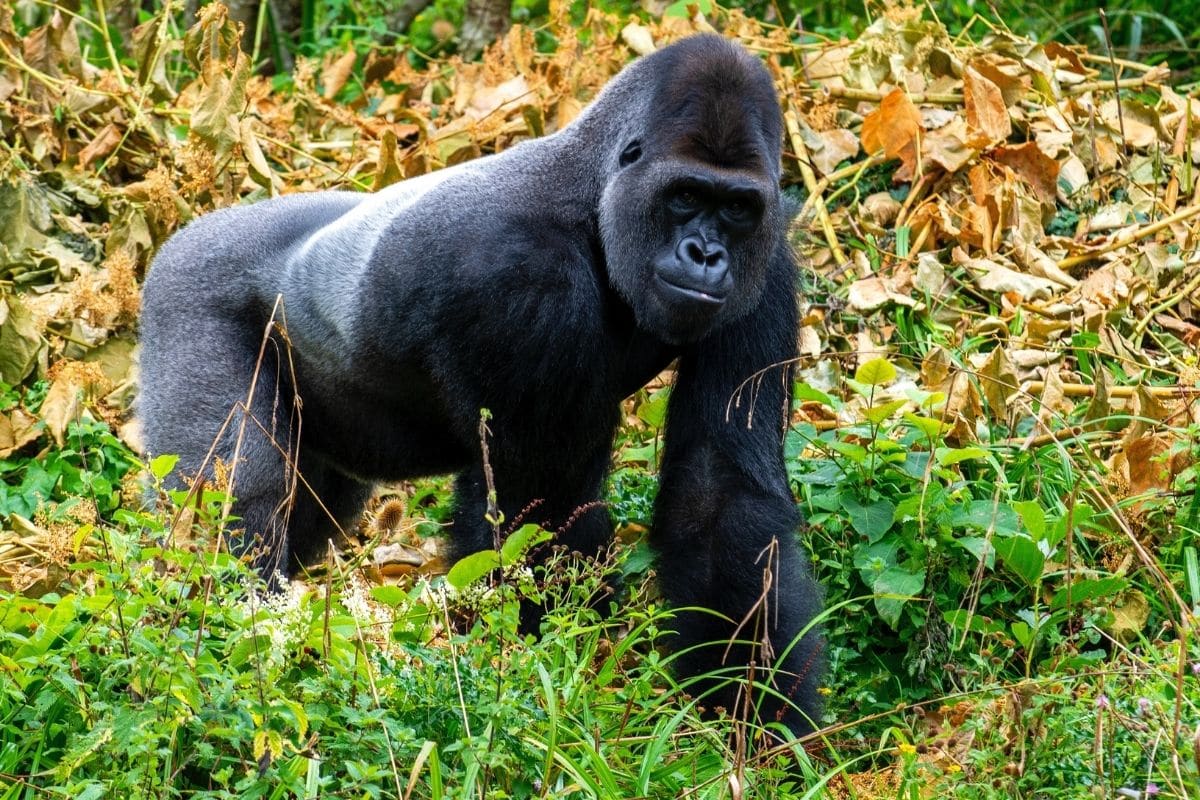
In addition to the coronavirus, it has happened nearly 100 times that humans have returned a pathogen to wild animals.
Originally, the coronavirus jumped from animals to humans. But then we also gave this virus back to animals. Now, a new study shows that this wasn’t the first time. In the magazine Ecology Letters the researchers describe the nearly 100 different cases in which diseases “relapsed” from humans to wild animals, just as SARS-CoV-2 has been able to spread among minks, zoo animals and wild white-tailed deer.
Coronavirus
Since the outbreak of the coronavirus, many scientists have been concerned about the fate of wild animals. It soon became clear during the pandemic that dogs and cats could also contract the virus from their owners. And not much later, the first zoo animals (tigers and lions) and farm animals (minks) were also discovered with COVID-19. There was therefore no reason to believe that humans would not be able to transmit the virus to wild mammals when in close contact with them. “Understandably, there has been a tremendous amount of interest in the transmission of pathogens from humans to wild animals in light of the pandemic,” said study researcher Gregory Albery. “We have therefore started digging through the literature to see how the process has manifested itself in the past.”
Perhaps the best-known example is the transmission of the coronavirus from humans to wild white-tailed deer in the United States. Between January and March 2021, scientists took nasal swabs from 360 white-tailed deer across Ohio. As many as 35 percent (129 deer) tested positive for several strains of the coronavirus. Experts suspect that the virus has spread from humans to deer. In addition, it is quite possible that deer then pass the virus back on to each other: The researchers discovered several mutations in the viral spike protein that are not often seen in human infections. And that suggests that the virus has passed from deer to deer. The fact that wild deer can become infected is somewhat disturbing. Because there is a fear that deer can form a new corona reservoir, from which they then infect humans again. If the virus can establish itself and survive in deer, they could be a new potential source of SARS-CoV-2.
The results show that the coronavirus has not been the only virus that humans returned to wild animals. It turns out that this has happened almost 100 times before. Nearly half of these incidents took place in captivity, such as in zoos.
Primates
In addition, it appears that in more than half of the cases the pathogen had jumped from humans to primates. Something that is not very surprising, by the way. Primates are genetically very similar to humans. And pathogens can easily jump to closely related hosts. In addition, wild populations of endangered great apes are closely monitored, making the possibility of a person transmitting a pathogen to great apes not inconceivable.
Transmission route
According to researcher Anna Fagre, this raises important questions. “The findings support the idea that we are likely to detect pathogens where we look for them, with a disproportionate number of studies focusing on charismatic animals in zoos or in close proximity to humans,” she says. “At the same time, this raises the question of which transverse transmission routes we may be missing. And that can have important consequences for public health and for the health and conservation of an infected species.”
Good news
However, the researchers also come with good news in their study. Because the findings show that artificial intelligence can be used successfully to find out which species are most at risk of contracting a particular virus. When the researchers compared the species infected with SARS-CoV-2 with predictions made earlier in the pandemic, they found that more often than not, scientists could have guessed it correctly. “It’s very reassuring to see that sequencing animal genomes and understanding their immune systems is paying off,” said study researcher Colin Carlson. “The pandemic gave scientists an opportunity to try out some predictive tools. And it shows that we are better prepared than we thought.”
Problematic
While this is reassuring, the researchers underline that it is still very problematic how little we know about diseases in wild animals. “We monitor SARS-CoV-2 more closely than any other virus on Earth,” Carlson says. “So if there is a backlash, we can absorb it. However, it is much more difficult to estimate the risk in other cases where we do not have as much information. It means that it is difficult to measure how serious a reflux of pathogens other than the coronavirus is for human health or for a wild animal.”
And so future research should focus on that, the researchers write. “Long-term monitoring allows us to recognize transverse transmission events much faster and act accordingly,” Fagre concludes.
Source material:
†Researchers find humans have given wild animals their diseases nearly 100 times” – Georgetown University Medical Center
Image at the top of this article: David Atkins via Pexels